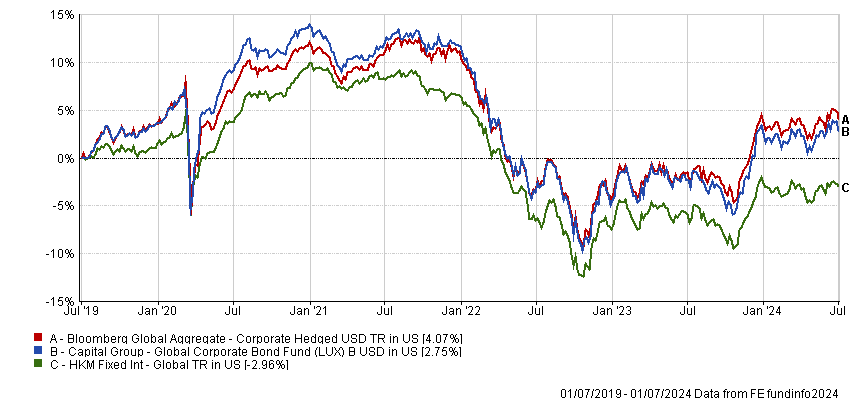US-headquartered asset manager Capital Group has partnered with DBS to distribute its Capital Group Global Corporate Bond fund (LUX) (GCB) to clients in Singapore and Hong Kong. DBS’s personal banking, Treasures and private banking clients will now be able to make direct investments to the fund.
DBS already distributes the Capital Group New Economy fund (LUX), a global equity fund focused on growth and innovation.
The $2.33bn GCB fund invests in corporate investment grade bonds worldwide and is designed for long-term stability. Its global approach provides diversification.
Launched in 2018, the Luxembourg-domiciled Ucits is backed by fundamental research, managed by a principal investment officer and a global team of 16 sector analysts investing in their highest convictions. Capital Group is an active asset manager with AUM of more $2.6trn (31 March 2024)
“DBS clients can now access the high-quality fixed income opportunities of Capital Group’s Global Corporate Bond fund alongside our existing Capital Group New Economy fund, a global equity fund focused on growth and innovation,” said Grant Leon, head of financial intermediaries, Asia and Europe, Capital Group, in a statement.
“GCB provides an opportunity to lock in future income by investing at current yields today, while offering a potential stabilising effect in times of volatility,” he added.
The fund has generated a 2.7% return during the past three years, according to FE fundinfo data, out-performing its sector average (-2.96%) but underperforming its benchmark, the Bloomberg Global Aggregate – Global Corporate Hedged USD index.

Hou Wey Fook, chief investment officer, DBS, said, “Barring an unexpected resurgence of inflation, a scenario of slow rate cuts amid a soft landing in the US economy bodes well for credit. Investors should therefore stay invested, deploying excess cash into bonds to lock in today’s higher yields while they are still available.”
Hou believes favours single-A/ and BBB investment grade corporate bonds, with an average portfolio duration in the 3–5-year region given the inverted yield curve.
















